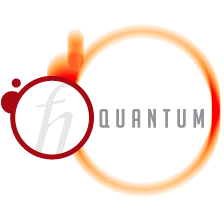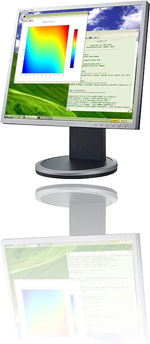 At the debate last night, John McCain brought up (twice!) for special scorn an example of spending on earmarks. His target? The “overhead projector for a planetarium”. It wasn’t the first time he’s brought up this earmark request up either. Bad Astronomy had a good post on how McCain’s comments on planetaria make him “literally antiscience”. The projector in question is hardly your run-of-the-mill overhead projector. The Adler planetarium in Chicago has a “Sky Theater” or a hemi-spherical dome on which it can project just about anything if you have the right equipment. Notre Dame (where I teach) has a very similar set-up in our digital visualization theater. The projectors we use were modeled on the current system at the Hayden planetarium, and just to give you some scope, we have a 50-foot high domed ceiling for a hexagon array of chairs that seats 136 students. The system is run with 10 computers, 8 of which do nothing but render 3D objects and transform them for hemispherical projections. It was a million dollar facility that goes a long way toward making all aspects of science visible to our students. In fact, as earmarks go, the planetarium projector at the Adler is a lot less offensive than some other projects (notably a certain bridge in Alaska).
At the debate last night, John McCain brought up (twice!) for special scorn an example of spending on earmarks. His target? The “overhead projector for a planetarium”. It wasn’t the first time he’s brought up this earmark request up either. Bad Astronomy had a good post on how McCain’s comments on planetaria make him “literally antiscience”. The projector in question is hardly your run-of-the-mill overhead projector. The Adler planetarium in Chicago has a “Sky Theater” or a hemi-spherical dome on which it can project just about anything if you have the right equipment. Notre Dame (where I teach) has a very similar set-up in our digital visualization theater. The projectors we use were modeled on the current system at the Hayden planetarium, and just to give you some scope, we have a 50-foot high domed ceiling for a hexagon array of chairs that seats 136 students. The system is run with 10 computers, 8 of which do nothing but render 3D objects and transform them for hemispherical projections. It was a million dollar facility that goes a long way toward making all aspects of science visible to our students. In fact, as earmarks go, the planetarium projector at the Adler is a lot less offensive than some other projects (notably a certain bridge in Alaska).
In the past, McCain has also targeted for scorn an expenditure to study the “DNA of bears in Montana”. To be fair, other earmarks have also been his target: The Woodstock museum, and the bridge to nowhere (at least until he picked a running mate who was in favor of that same bridge) have also been the targets of McCain’s anti-pork ire. But last night, he seemed to express a special loathing for earmarks for science.
Now, a good case can be made (and should be made) that using earmarks to fund basic science research or science outreach is just bad policy. In fact, I’d be happier if the budgets for science-related earmarks were turned over to the NSF in order to fund peer-reviewed and merit-based proposals. But if the earmarks are the only way to fund science outreach projects like the Adler’s planetarium, then count me in. It is certainly a better use of money than David Vitter’s proposed earmark of $100,000 for a group that promotes “creation science”. In fact a list of examples of religious earmarks pointed out by Americans United for the Separation of Church and State are all worse than the Adler planetarium project.
 I just got email from Brandon Wood about an open source project called Quantum Espresso (formerly known as PWSCF), which is a rather extensive open-source project for DFT-based electronic structure calculations. It appears to be a refactoring of some established codes (PWscf, PHONON, CP90, FPMD, Wannier) that have been developed and tested by some of the original authors of novel electronic-structure algorithms – from Car-Parrinello molecular dynamics to density-functional perturbation theory – and applied in the last twenty years by some of the leading materials modeling groups worldwide.
I just got email from Brandon Wood about an open source project called Quantum Espresso (formerly known as PWSCF), which is a rather extensive open-source project for DFT-based electronic structure calculations. It appears to be a refactoring of some established codes (PWscf, PHONON, CP90, FPMD, Wannier) that have been developed and tested by some of the original authors of novel electronic-structure algorithms – from Car-Parrinello molecular dynamics to density-functional perturbation theory – and applied in the last twenty years by some of the leading materials modeling groups worldwide.
 Some new software to point out today:
Some new software to point out today:  At the debate last night, John McCain brought up (twice!) for special scorn an example of spending on earmarks. His target? The “overhead projector for a planetarium”. It wasn’t the first time he’s brought up this earmark request up either. Bad Astronomy had a
At the debate last night, John McCain brought up (twice!) for special scorn an example of spending on earmarks. His target? The “overhead projector for a planetarium”. It wasn’t the first time he’s brought up this earmark request up either. Bad Astronomy had a 